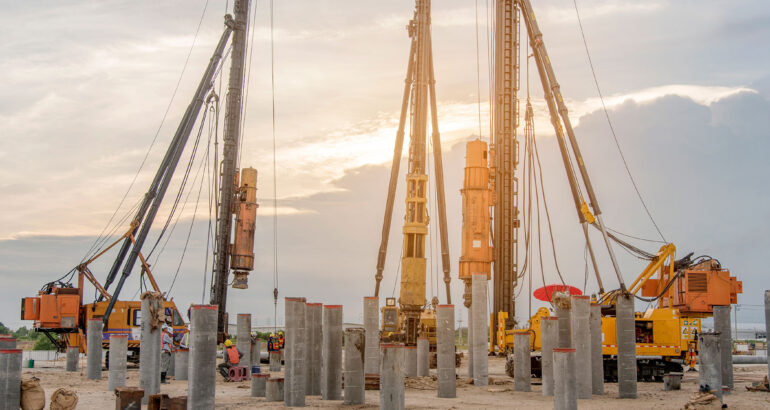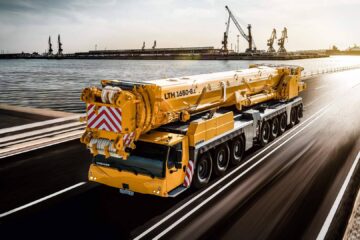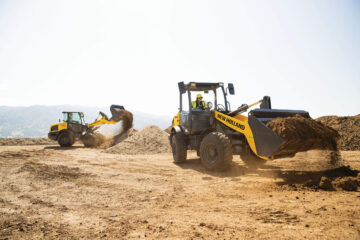When the test piles have been driven and the final pile lengths of a project have been authorized, an inspection of the foundation pile driving is still a very important function of a Bridge or Marine Construction Inspector. Not only does the inspector make certain that the piles are driven to adequate bearing and penetration, but also avoids excessive driving which may result in severe damage to the piles. Either extreme may render the piles useless and could result in the failure of a foundation. In general, appropriate bearing capacity criteria for foundation piling is established from test pile data and application of criteria for substantial refusal to driving of foundation piling is not appropriate.
Make certain that all piles for a unit have been satisfactorily driven, and redriven where required, before indicating approval of the driving for that unit. Do not delay the contractor unnecessarily, but do not let him pressure you into making a premature determination. If in doubt, consult with the Engineer.
Establish cut-off elevation and measure and record the cut-off length for each pile. Require the specified preservative treatment for the top of treated timber piles.
Following is a list of some of the responsibilities and duties of the inspector on a pile driving operation.
MAKE CERTAIN:
- That the pile locations have been staked (by the contractor) and checked (by the appropriate agency/owner) before driving is started. Where driving within a cofferdam, the pile lines should be marked off in both directions on the cofferdam walers and struts, with proper allowance for batter when necessary.
- That the pile material has been inspected in accordance with the requirements. The final inspection and acceptance will be at the site of the work. Even though the material may have passed previous inspection, it may have been damaged in handling or shipment (this is particularly true of timber piles). The thickness of the steel in H-piles and shells should be checked, and a visual inspection made of the general condition of the piles, including welds on welded Steel Shells, and the flange to web connections on H-piles. Review the Mill Test Reports to verify that the material is of domestic origin.
- That the equipment meets requirements (hammer is qualified).
- That the piles are properly prepared for driving.
- That the welder (if steel H-piles or shells are to be used) has passed all agency/owner required qualifying tests. All splices should be made in accordance with approved standard details for the type of pile
- That the length and diameter of the pile is measured and recorded before being placed in the leads.
- That the pile is properly positioned (usually by digging a small hole for the tip of the pile with a pointed shovel at the staked location for timber piles).
- That the pile is plumb, or at the specified batter.
- That the driving cap fits properly on the head of the pile. An improperly fitting pile cap, particularly on a timber pile, could create a hazard in addition to damaging the pile. “Chasers” are not permitted as transmittal of hammer impact to the pile cannot be assured.
- That the pile is properly supported laterally so as to avoid “whip” when driving, particularly if there is a noticeable bow in the length of the pile.
- When necessary, to secure the leads with guy ropes to control their position.
- When possible, to insist on starting the pile with reduced energy until the pile is well seated, particularly for timber piles.
- To observe the action of the pile very closely as it starts downward, and insist on immediate correction if it moves out of position, plumbness, or specified batter.
- To observe the operation of pile hammers and determine whether or not they are functioning properly when full power is supplied. Energy reductions in excess of 25 percent may be necessary if hammer is not operating properly.
- To note whether or not the pile and the hammer are in alignment. A pile can be easily damaged when not properly aligned with the hammer, and the damage may be blamed by the foreman to “overdriving.”
- To observe the pile closely, especially timber piles, for evidence of cracks, splits, or fractures, which may cause sudden failure and perhaps an accident. Timber piles may release splinters large enough to cause serious injury when dropping from considerable height.
- To observe any strain that may be created on the equipment due to high booms and/or heavy loads.
- That “penetration per blow” readings are taken well in advance of final penetration, when this is possible or practical, particularly when approaching the “substantial refusal” range.
- That timber piles are not driven to cut-off length since some damage is done to the top wood fibers by the hammer impact even though this may not be visible. Provide for at least 150 mm (6 in.) of cut-off. Steel, piles or shells may be driven to cut-off if the top of the pile is in reasonably good condition.
- That final penetration measurements are made by the inspector and are not delegated to the worker.
- To drive all piling to the bearing capacity satisfactory to the Engineer, to substantial refusal or to the required penetration. Do not continue driving a pile after substantial refusal has been obtained merely to reduce cut-off length, unless a shallow hard layer is suspected, or unless the contract specifies a minimum depth of penetration.
- To signal the foreman when the pile has been driven to the required penetration or substantial refusal. If there is a failure to signal the operator immediately, and a failure occurs as a result, the accident is the contractor’s responsibility.
- That as the top of the pile approaches cut-off elevation, inspect it visually for evidence of damage, and avoid, if possible, the inclusion of damaged areas below cut-off. Slightly deformed steel sections are not necessarily considered as damaged.
- To observe piles which have been driven to determine whether or not they may be heaving when driving adjacent piles. Order redriving of piles which have heaved. Plastic soils sometimes have this characteristic, particularly with closely spaced tapered piles.
- To require removal of earth that may have swelled above the bottom of footing elevation during pile driving. Areas which were over-excavated may be backfilled with approved material and compacted or filled with concrete.
- That when obstructions, such as rocks or boulders, are encountered near the surface they should be removed. If this cannot be done, then the pile pattern may have to be modified. Consult the Project Engineer, if necessary.
The inspection procedure for trestle type piles is much the same as for foundation piles, with the following additions:
- Require that guides or templates be used when necessary in order to keep the piles in proper alignment and at the correct batter. The tolerances are necessarily more rigid than are those for foundation piles.
- Timber or plank guides, set to correct grade and slope, should be used when timber pile cut-offs are made, since the pile cap should fit snugly on the pile without the use of shims or fills. Cutting off trestle piles should be done only by experienced sawyers or welders. Super-elevated roadways, or skewed bridges on grade, often require that the caps be placed on a slope, thereby necessitating that the cutoff guides also be placed on a slope.









